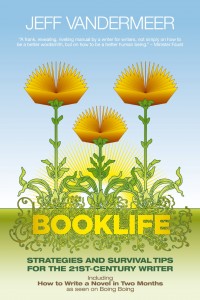Amy Sundberg is a writer of science fiction, fantasy, and YA. Her short fiction has appeared in places such as Redstone Science Fiction and Daily Science Fiction. She blogs regularly at The Practical Free Spirit and is currently working on a book about social media strategy for fiction writers. She lives in California with her husband and a ridiculously cute little dog. You can follow her on twitter @amysundberg.
Maybe your agent (or editor, or writer’s group) has been pressuring you to start a blog, or maybe you’ve seen what other writers are doing with their blogs and become intrigued. Maybe you’re interested in building community or connecting with your readers in a closer way. Or maybe you already have a blog, but it collects dust most of the year or could use a reboot.
Here’s what you need to consider before getting started:
1. Commit. Decide up front on a period of time to really devote energy to getting your blog started. You won’t attract readers overnight, and if you’re revamping your blog, it takes time to feel comfortable with the change. It also can take time for you to find your own unique voice for the blog. I recommend committing to at least six months.
2. Assess your time and energy. Are you willing to devote the time and energy necessary to maintain a blog? Because if you absolutely hate the idea, you might be better off putting the majority of your online time into other social media platforms. Readers can tell if you’re dialing it in on a blog, at which point it might not be worth the time grudgingly invested.
3. Choose a platform. The two main blogging platforms right now are WordPress and Blogger. Many writers use WordPress.org because it can be incorporated directly into their author webpage. If you want to try blogging out and don’t already have a blog-enabled webpage, you can start out with WordPress.com and port all that content over to a future website that uses WordPress.org when and if you need something fancier. Blogger is a bit simpler to get started on, if you find the technical aspects of beginning a blog to be intimidating.
4. Decide on a schedule. How often are you going to post? It doesn’t have to be every day, but you need to think of an ideal posting schedule before you get started. Be ready to adapt that schedule if it doesn’t work with the rest of your life, but otherwise, make your best effort to stick with the plan. When starting a new blog, it is often better to post at least once per week; two to three times a week is fabulous. More than once a day can be a bit much for some readers. When you have an already established blog with a loyal audience, you can dial back the frequency.
5. Keep a balance between promotional content and the main focus of your blog. It’s fine if you want to use your blog to promote your work: letting people know about your published stories, upcoming novels, exciting reviews, guest posts elsewhere, and scheduled appearances. However, if you are only ever talking about you, you, you, and buy, buy, buy. that can be a real turn-off to prospective readers. So keep a careful eye on how much time you’re talking about promotion vs. how much time you’re running other content that will interest (and maybe even captivate) your readers.
6. Let people know about your blog. It is okay to promote your blog. Otherwise, how will people know to read it? Make sure you include an easy-to-locate place on your blog where people can sign up to receive your posts via email and via an RSS feed. Let your Twitter, Facebook, and Google+ followers know when you have a new post. You don’t want to be obnoxious about it and post the same link several times, but one time (or two times on Twitter–some people like to tweet their blog post once in the morning and once at night) is perfectly okay.
7. Decide on your content strategy. This is one of the most critical steps in blog creation. Think about who your desired audience is, and then figure out ways in which you can add value to their lives. If you already have an established fan base for your work, your strategy will be different than if you’re a new writer just starting out. You also want to think about how you can make your blog original, the blog that only you could possibly write. For example, many writer blogs out there have very similar and repetitive content about writing. It’s important to either find a niche for yourself within the writing blogs if your desired audience is other writers instead of readers (see Chuck Wendig‘s or Juliette Wade‘s blogs) or figure out what you can blog about that is not exclusively writing. (If you’re having trouble wrapping your head around this idea, here is a primer to get you started.) Finally you want to consider what you’re comfortable talking about, what you’d prefer to keep private, and what tone you’d like to set in terms of appropriate behavior in the comments section (or if you even want comments).
We’ve only just begun the conversation about blogging, and about content strategy in particular. Blogging does require a certain commitment of time, energy, and willingness to experiment. But at its best, it can be quite a fulfilling and impactful experience.

